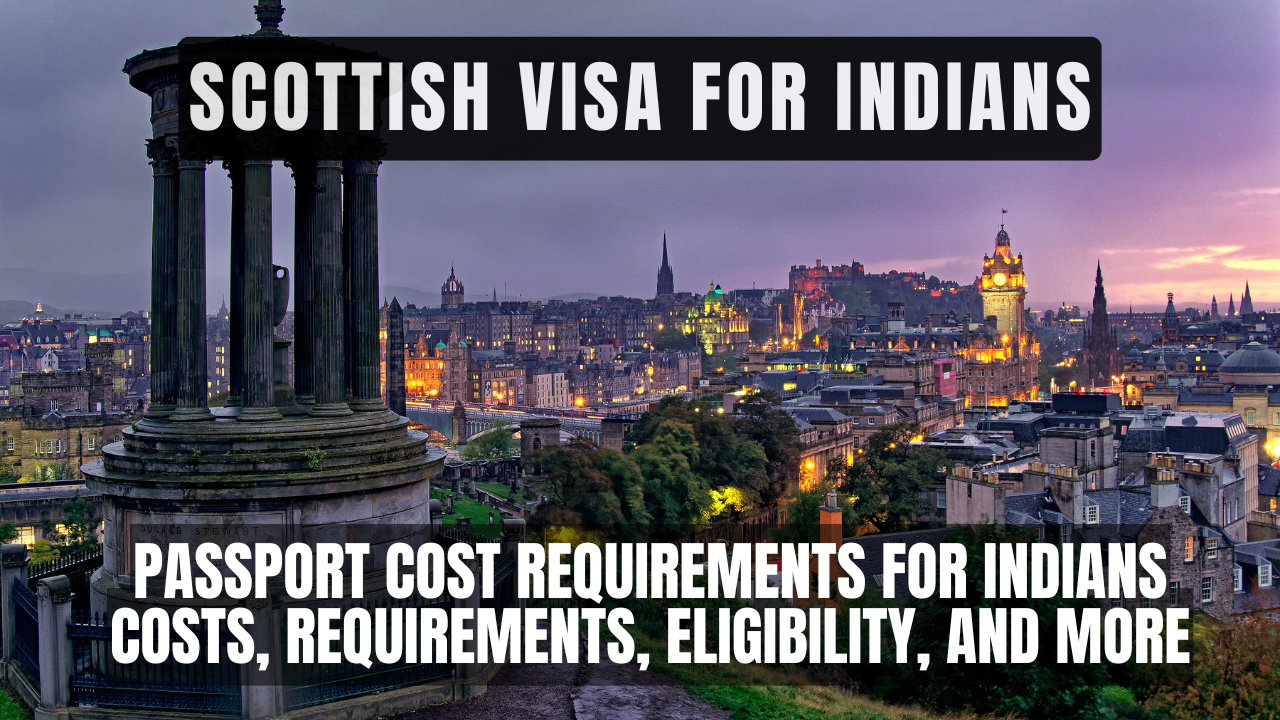Scotland, with its mist-shrouded castles, rugged Highlands, and vibrant festivals like the Edinburgh Fringe, draws Indian travelers. The allure of sipping whisky in Islay or hiking Ben Nevis is strong. Indian nationals need a UK visa to enter Scotland, as it’s part of the United Kingdom. This guide covers requirements, online applications, costs, processing times, VFS centers, success rates, durations, and refunds for a smooth journey.
UK Visa Types for Indian Visitors
Indians visiting Scotland for tourism, family, or short business need a Standard Visitor Visa. This allows stays for leisure, events, or short courses up to six months. For transit through the UK, choose the Visitor in Transit Visa. Frequent travelers can opt for long-term visas (two, five, or ten years), with each stay capped at six months. Work, extended study, or marriage requires specialized visas like Skilled Worker or Student. Scotland-specific programs, like a Rural Visa Pilot (if active in 2025), may exist for skilled workers, but tourists use the Standard Visitor Visa. Confirm if an Electronic Travel Authorisation (ETA) applies, though Indians usually need a full visa.
Eligibility requires proving genuine visitor intent—no plans to live or work illegally. This visa bars public fund access or extended residency via repeated visits.
Key Requirements: What to Prepare
Gather evidence showing ties to India and financial stability. Essential documents include:
- Valid Indian passport with six months’ validity post-UK departure and blank pages.
- Proof of accommodation in Scotland (hotel bookings or host invitations).
- Detailed travel itinerary, including flights, internal travel (e.g., train to Glasgow), and activities.
- Financial statements: bank balances, salary slips, or sponsor letters proving you can cover costs (£50-£100 per day, plus travel).
- Employment or education proof (job letter, student ID) to show return incentives.
- Tuberculosis (TB) test certificate from an approved Indian clinic—mandatory for stays over six months, advisable for all.
- Recent passport-sized photos meeting UK specs.
For families or groups, include dependent details. If sponsored, provide the sponsor’s UK status and financial docs. Avoid vague itineraries; tailor yours to Scotland’s highlights, like Loch Ness tours or Highland games. Biometrics (fingerprints, photo) are required at VFS centers.
Check for 2025 updates, like digital submission changes.
Application Process: Step-by-Step Online Guide
Apply online via the UK government website (gov.uk). Create an account, select the Standard Visitor Visa, and fill the form with details on travel history, finances, and purpose. Upload scanned documents; no physical mail is needed initially.
Pay the fee online via card. Book an appointment at a VFS Global center, the UK’s partner for Indian applicants. VFS handles biometrics and document checks. Centers are in Delhi, Mumbai, Chennai, Bangalore, Hyderabad, Kolkata, Ahmedabad, Chandigarh, Jalandhar, Pune, and more—over 15 locations. At the appointment, submit originals if requested, enroll biometrics, and opt for premium services like priority processing (extra fee) or lounge access. Track your application via VFS or gov.uk portals. The visit takes 15-30 minutes. Apply up to three months before travel, especially for peak seasons like summer Highland festivals.
VFS offers add-ons: SMS updates, courier passport return, or assisted form-filling for a fee. In 2025, expect integration with the UK’s digital immigration system.
Costs and Fees: Budgeting Your Expenses
Visa fees vary by duration. A short-term Standard Visitor Visa (up to six months) costs £127 (approximately 15,553 INR, depending on exchange rates). A two-year long-term visa is around 58,171 INR. Transit visas cost £70.
VFS service fees add £20-£50 for biometrics, plus premiums: Priority (5-10 days faster) at £250, or Super Priority (next day) at £1,000—ideal for urgent Scotland trips. TB tests cost 5,000-10,000 INR in India. Include travel to VFS centers and document translations if needed.
Fees increased by £12 for short visas in April 2025 due to inflation. Pay in INR online; no hidden charges on gov.uk.
Processing Time and Success Rate: What to Expect
Standard processing takes 15 working days (three weeks) from biometrics, but plan for 4-6 weeks during busy periods like post-monsoon travel. Priority services reduce this to five days, Super Priority to 1-2 days at select centers.
Success rates for Indian applicants are strong. Visitor visas have an 85-90% approval rate, based on genuine applications, compared to 95% for student visas in 2024-2025. Rejections often result from insufficient funds or weak home ties. In Q1 2025, non-settlement visa refusals were about 12%, but Indians fare well with strong documents. Track global trends; UK’s post-Brexit policies favor genuine tourists.
Delays are rare but consider holidays. Monitor via email notifications.
Visa Duration: How Long Can You Stay?
Approved visas allow up to six months per entry, ideal for Scotland’s seasons—autumn in the Cairngorms or winter Northern Lights hunts. Long-term visas (2-10 years) permit multiple entries, each up to six months, perfect for repeat visits to clan festivals or golf tours.
Extensions are possible in the UK for reasons like medical emergencies, up to six months (fee: £1,000). Overstaying risks bans, so plan exits carefully.
Refund Policy: Know Before You Apply
UK visa fees are non-refundable, even if rejected or withdrawn, to ensure serious applications. VFS premium fees may offer partial refunds if unused—check terms. If errors occur (e.g., wrong category), reapply and repay. Budget wisely—view it as an investment in your Scottish trip.
Tips for Smooth Approval
Personalize your application: Highlight Scotland-specific plans, like a whisky trail, to show intent. Ensure consistent documents; discrepancies raise flags. If previously refused, address reasons in a cover letter. Use professional help for complex cases, but avoid agents promising guarantees.
